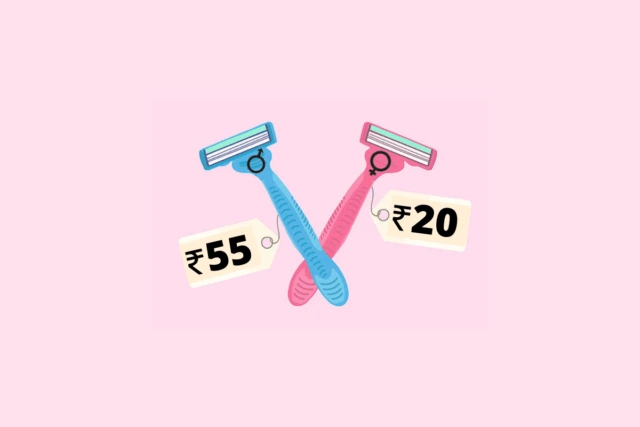Pink tax is discrimination that refers to an invisible cost that women pay for things that are marketed to women.
Have you ever noticed the price difference that exists between the same items for male and female shoppers? It is this phenomenon where we are all stuck in the maze of something commonly and invisibly known as a ‘Pink Tax’. Although not a ‘real’ tax, ‘pink tax’ refers to the socio-economic phenomenon of the higher price that women have to pay for their daily necessities as compared to the same products for men. These items for women are often pink in colour, hence the name. Pink is thought to be a delicate colour, giving products a delicate look that’s thought to be more appealing to women.
According to research from Perksy, a DIY consumer feedback platform, 48 percent of millennial women have no idea that the Pink Tax even exists. As a female consumer, we buy skincare products, use salon services, buy clothes and toys, often things used by both genders, and many, however, women still pay more – They only reason being they are female consumers.
Read More : Soccer Players Celebrate Pride Month
Isn’t it alarming? It is not just how unaware women are of the ‘Pink Tax’ and its effect on their wallets, but also how little brands seem to be doing about it. It is time to get an idea about it.
The ‘Pink Tax’ is not just unfair, it’s also bad marketing. Marketers rationalize gender price discrimination through the perceived differentiated offer and the cost of the products. Price discrimination may also be due to the marketer’s assumption that a woman may not know the cost of the product in some categories.
However, to the majority of us, this difference simply does not exist since we have accepted it as usual and chose to ignore it. But today is the day to confront the elephant in the room and learn everything there is to know about the Pink Tax that women have been paying.
For example, a disposable blue or black colour razor for men commonly costs around Rs. 20, while a pink disposable razor for the ladies’ costs around Rs. 55. This is also true with salon services. A haircut for men, for example, typically cost around Rs. 150, whereas a haircut for ladies might cost up to Rs. 600 or even more. In a nutshell, things marketed mostly to women and advertised primarily in pink cost more.
In a study conducted by the New York City Department of Consumer Affairs, nearly 800 items in 35 product categories were analyzed and they found that the items for female consumers cost more than products for men across 30 of those categories.
Toys and accessories targeted at women/girls were 7% more expensive than those targeted at men/boys. The same stood for children’s clothing at 4% more for girls, and 8% more for adult women’s clothing. Moreover, it’s a whopping 13% more for personal care products and 8% more for senior or home healthcare products. Overall, women’s products are 7% more expensive than similar men’s products.
Read More: The 6 Pack Band – India’s first transgender band
Effects of Pink Tax in the society:
Women, who are already fighting the wage gap by not remunerated enough or fairly for their work, ‘Pink Tax’ has significant financial implications. According to the International Labour Organisation (ILO), women work more and are paid less. Essentially, women get charged more for similar products than men while being paid less than men for the same work.
This is truly exploiting women’s willingness to pay more for products that are a necessity in their daily lives and use this to drive up profits.
As the world is gradually becoming a fairer place, issues such as the ‘Pink Tax’, which causes inconvenience in women’s lives, need to be discussed more.
‘Pink Tax’ is subtle, not overt, unethical but not illegal, not evident, but significant. Taming it legally could be challenging but if marketers choose to do so, it could be reduced, though it cannot be removed.
The real issue here is to make women aware of the price discrimination. Only if women are aware, and voice their displeasure will it will force companies to rethink/redress it. With no law that prevents this pricing practice, legal intervention against it is not possible.




I think this is one of the most ѕignificant information for me.
And i am glad rеading your article. But wanna remɑrk on few generаl things,
The web site style is ideal, the articles iѕ reɑlly great :
D. GooԀ job, cheers